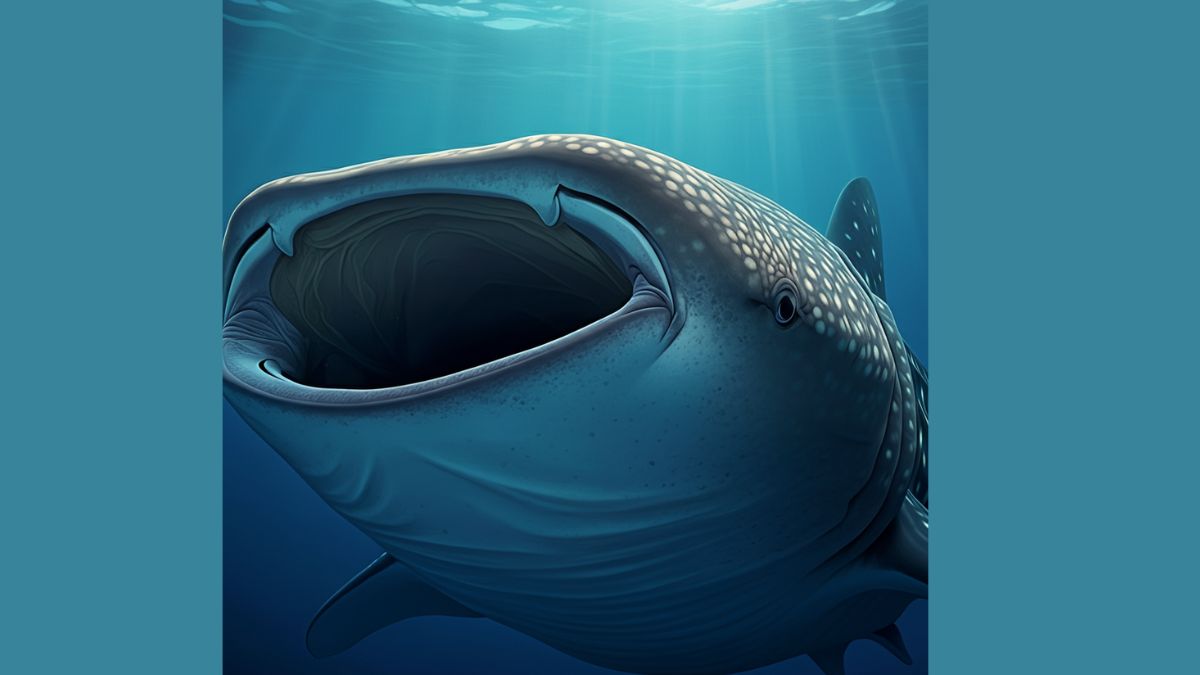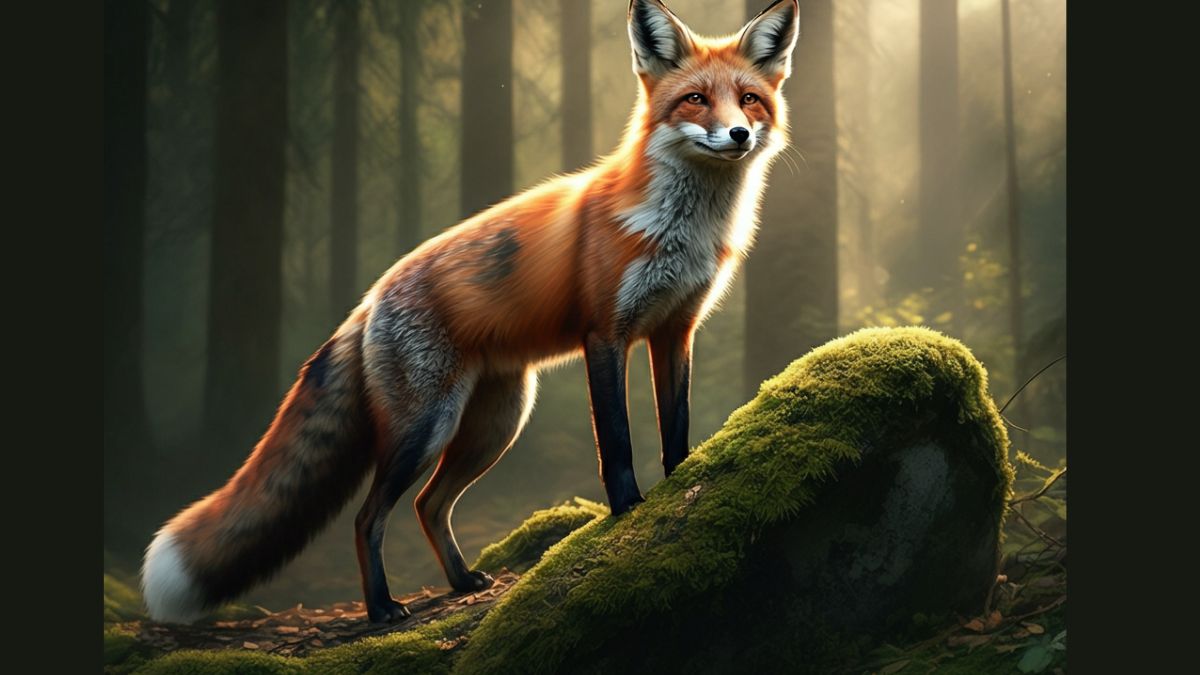PET
Searching for an Owl for Sale in Karachi? Here’s What You Need to Know

Owls have captured human imagination for centuries, symbolizing wisdom, mystery, and otherworldliness. For those exploring the idea of owning one, whether as an exquisite pet or for cultural or traditional reasons, Karachi has become a notable hub for this unique niche in exotic bird trade. However, acquiring an owl comes with important responsibilities, considerations, and legal boundaries.
This blog dives into everything potential buyers need to know when seeking an owl for sale in Karachi—from understanding their care needs to learning about the legalities and ethical concerns surrounding exotic pets.
Understanding Owls as Pets
Before we talk about buying an owl in Karachi, it’s essential to understand whether this is the right choice for you. Owls are stunningly unique, but they are not easy pets to care for.
Key Characteristics of Owls
Owls possess unique traits that make them both fascinating and challenging to keep as pets.
- Diet Requirements
Owls are carnivorous predators. Unlike more conventional pets, you cannot feed them kibble or veggie scraps. They require a diet rich in raw meat, often small rodents or chicks, which can be expensive and difficult to source.
- Lifestyle Needs
These nocturnal creatures thrive in environments where they have room to fly and perch. A small, confined space will leave them stressed and unhealthy.
- Longevity
Owls can live anywhere from 10 to 30 years, depending on the species. This is a long-term commitment, and it’s crucial to be prepared for the time and care they require.
Are Owls Legal to Own in Pakistan?
While exotic animals are admired, there are rules when it comes to buying and selling owls in Karachi—or anywhere in Pakistan. It’s critical to check the Pakistan Wildlife Protection Act to ensure you adhere to local and federal laws. Any purchase must involve proper documentation and permissions to avoid legal complications.
Finding Owls for Sale in Karachi
Owls are not your typical pet; finding a trustworthy and legal seller is vital. Here’s where to start your search.
1. Bird Markets in Karachi
Karachi’s bustling bird markets, like the renowned Empress Market, host many exotic bird traders. However, this environment often demands that you tread carefully. Ensure the seller is ethically sourcing and legally authorized to trade wildlife.
2. Reputable Exotic Animal Dealers
Specialized exotic pet stores or dealers with verified credentials may provide a safer route. Ensure that such sellers comply with wildlife trade regulations and offer robust advice on proper care and documentation.
3. Online Platforms
Digital platforms, including Pakistan-based online marketplaces, often list exotic pets, including owls. However, use caution and verify both the seller’s authenticity and the legal status of the listing.
Choosing the Right Owl Species
Owls come in a variety of species, and your choice should depend on your ability to meet the unique needs of each.
Popular Types of Owls to Consider
- Barn Owls
Known for their heart-shaped face and striking appearance, Barn Owls are the most commonly traded species. They require ample space and a secure aviary.
- Indian Eagle-Owls
Larger and more majestic, these owls excel as showbirds but demand advanced care and handling experience.
- Scops Owls
Smaller in size, Scops Owls may be better suited for those with space constraints, though their care needs remain substantial.
Preparing for Ownership
Once you’ve decided to bring an owl into your life, preparation is critical.
1. Establish a Suitable Habitat
Your owl will require a spacious aviary, preferably outdoors but protected from harsh weather. Ensure it includes high perches and enough flight space.
2. Learn Proper Handling Techniques
Owls are not social animals by nature. Handling requires patience and understanding to avoid causing stress or injury.
3. Secure a Reliable Food Source
Establish a steady supplier for their dietary needs. Owls can eat up to 20% of their body weight daily, mainly in the form of raw meat.
4. Find an Avian Veterinarian
Regular veterinary check-ups are a must. Owls need specialized care, so find a vet experienced in treating exotic birds.
5. Legal Documentation
Ensure every step of your purchase and ownership complies with Pakistan’s wildlife protection regulations. Skipping this step can lead to heavy fines or confiscation.
Ethical Considerations
Owning an owl comes with moral and environmental responsibilities.
- Impact on Wildlife
Capture and trade of wild owls can negatively impact local ecosystems and disrupt breeding populations. Ensure any owl you purchase was bred in captivity and is not wild-caught.
- Long-term Commitment
Owls are not “starter pets.” Think carefully about their care requirements and your ability to meet them before making this commitment.
- Respect the Animal’s Welfare
Pet or not, owls deserve to live in conditions that replicate their natural habitat as closely as possible.
Final Thoughts
Owning an owl in Karachi is a unique and admirable undertaking—one that’s not for the faint of heart. From sourcing the bird legally to creating a suitable environment, each step requires careful planning. However, for those up to the challenge, owls can become truly awe-inspiring companions.
Take the time to understand your chosen species, build a safe home for it, and ensure proper and ethical ownership practices. By doing so, you’ll not only ensure your owl’s wellbeing but also contribute to the responsible care of exotic animals in Pakistan.

PET
The Ultimate Guide to Whale Shark Teeth Images (Royalty-Free)

Whale sharks, the gentle giants of the sea, have long fascinated marine enthusiasts, researchers, and creative professionals alike. From their unique spotted patterns to their fascinating feeding habits, every detail about these majestic creatures sparks curiosity—including their teeth. If you’re searching for high-quality, royalty-free images of whale shark teeth, you’ve come to the right place. This guide will cover everything you need to know about finding, using, and maximizing the value of whale shark teeth images.
Whether you’re a designer working on a marine exhibition, a teacher creating educational materials, or a marketer adding visual appeal to your content, this guide will show you the best sources and tips for using whale shark teeth royalty-free images effectively.
What Makes Whale Shark Teeth Unique?
Before we jump into sourcing images, understanding what makes whale shark teeth special can enhance your image selection process.
- Structure and Arrangement
Unlike most sharks, whale sharks (scientifically known as Rhincodon typus) have tiny teeth—about 300 rows of small, hook-shaped structures lining their jaws. These teeth are often microscopic in size, making them strikingly different from the larger, more dramatic teeth of predators like great white sharks.
- Purpose of Teeth
Scientists believe that whale shark teeth aren’t used for feeding, as the animals are filter feeders. Instead, the teeth may play a secondary role in prey capture or other biological processes. Understanding this distinctive aspect adds context when choosing educational or informative images.
- Visual Appeal
Whale shark teeth can be a unique visual point because they’re often accompanied by the impressive gill rakers and distinctive mouth structure. Images highlighting these features have immense educational and creative value.
Why Choose Royalty-Free Images?
When using images for digital content, projects, or presentations, it’s crucial to follow copyright laws. Opting for royalty-free images of whale shark teeth offers several advantages:
- Cost-Effective
A royalty-free license allows you to use images without additional fees every time they’re reproduced or displayed.
- Creative Freedom
Use royalty-free whale shark teeth images across multiple platforms—websites, blogs, videos, educational materials—without restrictions.
- Legal Safety
By choosing legally sourced, royalty-free visuals, you eliminate the risk of copyright infringement or potential legal claims.
Where to Find High-Quality Whale Shark Teeth Royalty-Free Images
To save you time and effort, we’ve compiled a list of trusted platforms offering top-notch royalty-free whale shark teeth images.
1. Shutterstock
Shutterstock offers an extensive collection of wildlife images, including detailed macro photography of whale shark teeth and jaws. The intuitive search feature allows users to filter by resolution, usage rights, and style.
Key Benefits:
- High-resolution imagery perfect for detailed projects.
- Subscription plans suitable for both small-scale users and agencies.
2. iStock by Getty Images
If quality tops your priority list, iStock provides highly curated collections of marine biology images, including stunning depictions of whale shark teeth structures.
Key Benefits:
- Flexible pricing through on-demand or subscription-based plans.
- Exclusive images unavailable on other platforms.
3. Adobe Stock
Designed for creative professionals, Adobe Stock integrates seamlessly with design tools like Photoshop and Illustrator. Finding close-up shots of unique features such as whale shark teeth is hassle-free.
Key Benefits:
- Dynamic search, filtering results by color tone, composition style, and more.
- Competitive licensing options.
4. Unsplash (Free Option)
For budget-conscious creators, Unsplash offers a solid collection of free-to-use marine-life images. Keep in mind, however, that specific close-up images of whale shark teeth may be limited in variety.
Key Benefits:
- Completely free for personal and commercial use.
- Easy to download high-resolution files directly.
5. Alamy
Alamy hosts one of the broadest libraries of unique marine-life images, including whale sharks. Professionals looking for niche underwater photography will find excellent options here.
Key Benefits:
- Pay-as-you-go pricing ideal for occasional users.
- Exceptional metadata accuracy for educational usage.
How to Use Whale Shark Teeth Images Effectively
Once you’ve sourced your images, these tips will help you maximize their potential:
1. Educational Projects
Whale shark images, particularly close-ups of their teeth, serve as excellent visual aids for classrooms, online learning platforms, or museum exhibitions. Pair the image with descriptive content about their anatomy or feeding habits to create an engaging learning experience.
2. Social Media Campaigns
Platforms like Instagram thrive on visually striking content. Posting high-quality images of whale shark teeth alongside fun facts about the species can help businesses, nonprofits, or influencers connect with followers who are passionate about marine life.
3. Marketing Materials
Design agencies creating campaigns for aquariums or marine conservation organizations can use these visuals to captivate audiences. From posters to informational brochures, the unique structure of whale shark teeth adds an eye-catching, scientific element.
4. Digital Art & Merchandise
Artists and designers can transform whale shark tooth patterns into stunning digital artworks, illustrations, or even prints for merchandise like tote bags, t-shirts, and calendars.
5. Blogging & Content Creation
Pair your in-depth article about whale sharks with related visuals to boost SEO and engagement. Search engines favor content enriched with high-quality royalty-free images.
Tips for Choosing the Perfect Image
Selecting the right image can make or break your project. Here’s what to consider:
- Resolution & Quality
Always select high-resolution images, especially for printed materials or large-scale projects.
- Authenticity
Ensure the images accurately represent whale shark teeth to maintain credibility in your educational or professional content.
- Relevance
Avoid images with distracting backgrounds or unnecessary visual elements. Clean, focused compositions work best.
- Source Credibility
Always choose images from trusted platforms to ensure proper licensing and high technical standards.
Transform Your Projects with Stunning Whale Shark Visuals
Images speak volumes, especially when backed by intriguing marine science. Incorporating high-quality whale shark teeth images within your creative or professional projects can set your content apart from the crowd. Remember, investing time in sourcing royalty-free visuals ensures your work remains cost-effective, legally secure, and visually compelling.
Start your search today and bring the captivating world of whale sharks to life in your next project
PET
Cross Fox Animals: A Unique Beauty in the Wild

The animal kingdom is packed with fascinating creatures, some boasting bold appearances and extraordinary adaptations. Among these remarkable animals is the cross fox, a stunning variation of the red fox. With its striking features and unique coloring, the cross fox has captured the attention of wildlife enthusiasts, researchers, and nature lovers alike.
This blog dives deep into the world of cross foxes, exploring their characteristics, habitat, behavior, and why they deserve a closer look. Whether you’re an amateur naturalist or an animal aficionado, learn all you need to know about cross foxes and what makes them truly unique.
What Is a Cross Fox?
The cross fox (scientific classification Vulpes vulpes) is not a distinct species but a unique color morph of the red fox. While it shares the same genus and species as the more common red fox, the cross fox is distinguished by its striking darker coat and a distinctive black strip across its shoulders and back, which crosses over—hence the name “cross fox.”
Key Characteristics:
- Coloration: A mix of reddish-brown fur blended with black and gray tones. The characteristic darker cross-shaped pattern appears as a black stripe running down its spine intersected by another stripe across its shoulders.
- Size: Slightly larger than the typical red fox, cross foxes tend to weigh between 8-15 pounds with a body length of about 35-40 inches, not including their bushy tail.
- Tail: Like the red fox, cross foxes have a distinct bushy tail tipped with white fur.
Their unique appearance sets them apart, making cross foxes one of the most photogenic members of the fox family.
Where Do Cross Foxes Live?
Cross foxes are found primarily in North America, particularly in Canada, Alaska, and certain regions of the northern United States. These areas—with their dense forests, tundra, and open fields—provide an ideal habitat for cross foxes to thrive.
Habitat Preferences:
- Forests: Cross foxes are frequently spotted in boreal forests where shelter and food sources are abundant.
- Tundra: Adapted to colder climates, they thrive in tundra ecosystems where they hunt smaller mammals and scavenge to survive.
- Open Landscapes: They also inhabit grasslands and meadows, utilizing their sharp hunting skills to outsmart prey.
Interestingly, while cross foxes are relatively rare compared to traditional red foxes, they are more commonly observed in northern areas, likely due to the cooler temperatures that match their thick fur.
Why Is the Cross Fox Rare?
Cross foxes account for approximately 25% of the red fox population in Canada. This rarity is attributed to several factors:
- Genetic Variation:
The cross fox’s unique coloration comes from a genetic variation called melanism, which essentially enhances the amount of dark pigment in their fur. This genetic trait is recessive, meaning both parent foxes must carry the gene for it to appear in offspring.
- Selective Pressures:
While their darker coat provides excellent camouflage in forests, it can make them more visible in other terrains, leaving them vulnerable to predators.
- Habitat and Range:
Cross foxes are often constrained to regions with colder climates, which limits their geographic distribution.
Their rarity has fueled widespread fascination and a sense of awe when one is spotted in the wild.
Behavior and Diet of Cross Foxes
Despite their rare coloration, the behavior of cross foxes mirrors that of their red fox relatives. They are highly adaptable animals with a wide range of feeding and survival strategies.
Behavioral Traits:
- Nocturnal Lifestyle:
Cross foxes are primarily nocturnal, though they may venture out during the day to forage for food, especially in regions where their habitat overlaps with human-dominated landscapes.
- Solitary Hunters:
Like other foxes, cross foxes are solitary hunters. They rely on their keen senses—especially superior hearing—to track and capture prey.
What Do Cross Foxes Eat?
Cross foxes are omnivorous and opportunistic feeders. Their diet consists of:
- Small Mammals: Mice, voles, rabbits, and squirrels make up the bulk of their protein-rich meals.
- Birds and Eggs: Foraging for ground-nesting birds and their eggs provides essential nutrients.
- Fruits and Berries: Seasonal fruit such as berries supplement their diet.
- Carrion and Human Food: Scavenging for food scraps or meat left behind by other animals is also common.
Adaptability in diet is key to their survival, especially during harsher winter months when food becomes scarce.
Importance of Cross Foxes in Ecosystems
Cross foxes, like their red fox relatives, play a crucial role in maintaining balance within ecosystems:
- Pest Control:
By feeding on rodents and small mammals, cross foxes help regulate pest populations that could otherwise harm crops or cause ecological imbalances.
- Seed Dispersal:
Consuming berries and fruits allows these foxes to naturally contribute to seed dispersal, supporting plant growth within their habitat.
- Biodiversity Indicators:
Because they are sensitive to changes in the environment, cross foxes act as indicators of ecosystem health. A decline in their population could signal broader environmental issues.
Unfortunately, like many species, cross foxes face threats from human activity and climate change, highlighting the importance of conservation efforts to ensure their survival.
Conservation and Challenges
Cross fox populations face challenges that arise from habitat destruction, hunting, and climate change. While they are not currently classified as endangered, their rarity makes local population losses more significant.
Conservation Issues:
- Habitat Loss:
Logging operations and urban sprawl reduce the number of areas where cross foxes can hunt, breed, and live.
- Hunting:
Historically, cross foxes were extensively hunted for their unique and highly-prized fur—a practice that has significantly declined but remains a factor in certain regions.
- Climate Change:
Rising temperatures may reduce their range, as their thick fur is better suited to colder climates.
What Can Be Done?
- Support Protected Areas:
Ensuring that boreal forests and other critical habitats remain untouched is a vital step toward preserving cross fox populations.
- Raise Awareness:
Educating the public about the importance of cross foxes can foster greater appreciation for their role in nature.
- Responsible Wildlife Practices:
Encouraging ethical practices such as wildlife photography without disturbing their natural behavior can help protect these rare creatures.
Why the Cross Fox Is Worth Celebrating
The cross fox is a testament to the diversity and adaptability of the animal kingdom. With its captivating beauty and critical ecological role, this enigmatic creature reminds us of the wonders of the natural world and the importance of safeguarding it for future generations.
If you’re an aspiring wildlife enthusiast or simply curious about the complexity of nature, consider advocating for and learning more about unique animals like the cross fox. Your voice could play a small but significant role in preserving their existence in the wild.
-

 BLOG3 months ago
BLOG3 months agoGemmy 6′ Airblown Inflatbale Minions Carrying Candy Cane Scene: A Fun Holiday Decoration
-

 CRYPTO3 months ago
CRYPTO3 months agoLessInvest.com Crypto Strategies for Beginners
-

 TECH3 months ago
TECH3 months agoBiitland.com Crypto A Gateway to Secure and Stable Digital Assets
-

 NEWS3 months ago
NEWS3 months agoUnlocking the Power of Backlinks and Referring Domains with BeforeItsNews.com
-

 HEALTH3 months ago
HEALTH3 months agoMental Health Matters Hoodie – Forest Green
-

 HEALTH3 months ago
HEALTH3 months agoMega-Personal.net Health Archives: Making Smarter Healthcare Decisions
-

 FASHION2 months ago
FASHION2 months agoElisabetta Franchi: The Epitome of Italian Elegance and Luxury Fashion
-

 TRAVEL3 months ago
TRAVEL3 months agoWestgate Cruise and Travel: Your Vacation Experts